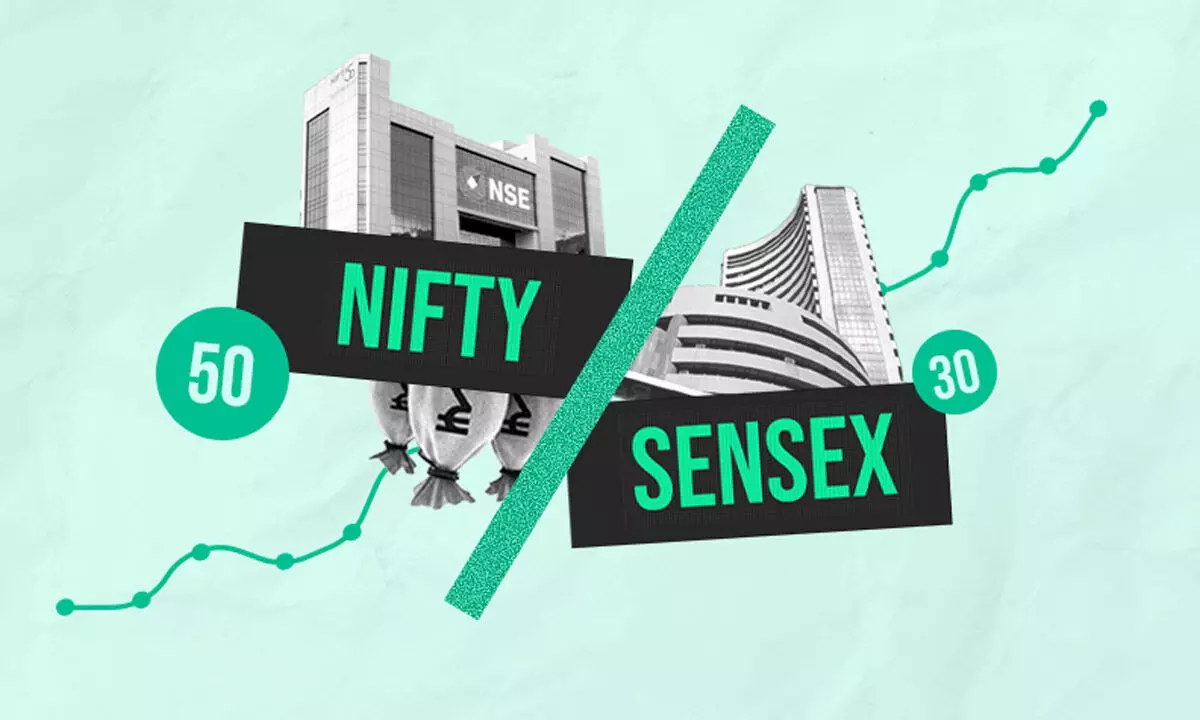Stock market and the gamble, lottery, strategic venture doctrine

Trade Setup for June 11: Nifty needs to sustain above 25,200 to push towards 25,600
The Managing Director and CEO of Bombay Stock Exchange (BSE) Sundararaman Ramamurthy has urged investors to be vigilant and informed
The Managing Director and CEO of Bombay Stock Exchange (BSE) Sundararaman Ramamurthy has urged investors to be vigilant and informed. His advice was “You trade what you understand, and you understand what you trade: If you don’t do that, you will have a problem.’
This is a momentous observation given the substantial number of people who trade in the stock market. In fact, many investors are found wanting when it comes to selecting the right companies, monitoring the market, and choosing between Lump Sum Investments and Systematic Investment Plans (SIPs). While the former comes with a greater level of risk but offers higher returns, the latter promotes disciplined investing, a lower level of risk, and more consistent returns.
Consistency and informed decision-making matter more than market timing.
Meanwhile, to guide the investors and make available market trends, shape investor confidence, influence policy decisions, and act as economic barometers, stock indices like the Sensex have emerged. Irrespective of whether markets are ‘bullish (rising) or bearish (falling)’, the indices serve as reference points to compare the performance of individual portfolios or mutual funds, providing a macro-level snapshot of business sentiment and economic health. Sensex is a statistical measure reflecting composite value of a select group of stocks.
As a key benchmark of the Indian stock market, the BSE sensex represents the weighted average performance of 30 financially sound and well-established companies from diverse sectors, including banking, technology, energy and consumer goods. The sensex tracks the performance of these companies, and the index is calculated by way of a scientifically designed market capitalisation-weighted formula.
Charles Dow's creation of the Dow Jones Industrial Average (DJIA) in the USA in 1896, featuring a dozen companies, marked the genesis of stock indices globally.
Following suit, India launched sensex in 1986. It was developed by the BSE’s Economic Research and Policy division. Later, the National Stock Exchange (NSE) introduced the NIFTY 50, another major index tracking 50 large companies. As Ramamurthy suggested, investors need to understand how these listed companies are performing within the broader market trend.
Reports like Sensex or Nifty have ‘gone up’ or ‘fell sharply’ reflect the collective performance of the 30 or 50 companies respectively. Rising index signals economic optimism, job creation, and business growth. Falling index indicates caution, global pressures, or weak corporate earnings. Market movements are influenced by a wide range of domestic and international factors. Sensex and Nifty experienced dramatic highs and lows over the years.
Sensex was launched with data that was calculated to 1979 base of 100, beginning around 550 points. Nifty followed in 1995 with a base of 1000. During the global fiscal crisis of 2008–2009, sensex, in a steep decline, dropped to 7,697 and Nifty to 2,524. The Harshad Mehta fraud resulted in a low of 2,529.
Before the 2008 crash, Nifty peaked at 6357 and sensex touched an all-time high of 21,206 points in January and later fell to a low of 8,160 by March 9, 2009. More recently, between September 2024 and February 2025, both experienced rises. On September 27, 2024, sensex hit an all-time high of 85,978 and Nifty 26,277 points. By February 28, 2025, they dropped to 73,198 and 22,124, respectively, reflecting market trend consequent to global and domestic developments.
Defying the global market trend and marking a seventh day of rise, sensex and Nifty touched 80,254 and 24,328 points respectively by April 23, but ended lower in the next two days to touch 79,213 and 24,039 points on April 25. Sensex rose by 660 and Nifty added 187 points during the week.
Despite unpredictability, an inherent characteristic of markets, sensex manipulation cannot be ruled out, despite it being difficult. Market operators and influential investors may artificially inflate stock prices by buying in bulk before offloading for profits. Insider trading by people using confidential information tends to gain unfair advantage in the stock market, despite SEBI regulation. Through the ‘pump-and-dump’ scheme, fraudsters create a buying frenzy that will pump up the price of a stock and then dump shares of the stock by selling their shares at the inflated price.
The 2009 Satyam Computers (part of both the Sensex and Nifty) scandal remains a striking example of how a single company's collapse can impact the entire market. When Satyam Chairman B. Ramalinga Raju admitted that he had manipulated the company's accounts, the stock plunged by over 75 per cent in a single day, eroding massive investor wealth. Sensex dropped by 750 points. The scandal raised concerns across corporate India, affecting the broader market. International markets too witnessed such corporate frauds that led to collapses of high-profile firms like Enron (USA) and Wirecard (Germany). These cases reinforce the idea that investor’s trust is the foundation of capital markets, and once that trust is broken, the consequences can ripple far beyond the company in question.
Despite being rooted in logic and data, the stock market from time to time depicts itself as a gamble, lottery, or rich man’s playground. Especially beginners, doubting Thomases, and on occasions even seasoned investors feel the pinch. This perception is not entirely unfounded. When people without due diligence invest blindly, based on ‘media hearsay’ their investment turns into speculation. Hence, the stock market may resemble a casino more than a wealth-creation platform.
The comparison to a lottery may arise from unrealistic expectations. Many investors hope to double their money overnight, picking stocks as though they were lucky numbers. Such an approach ignores risks and lacks any strategic foundation. Luck may play a role in short-term gains. But long-term success in the stock market depends on research, planning, and discipline. It is similar to the difference between gambling on luck and managing a business wisely.
When treated responsibly, the stock market is far from a game of chance. It becomes a serious platform for long-term wealth creation, akin to managing a business. By following a disciplined strategy investors become entrepreneurs of their own financial future. They need not be driven by emotion, tips, or momentary enthusiasm, and face losses that reinforce the saying that ‘stock market is gambling’ myth. A sound investment strategy emphasizes reviewing portfolios regularly, avoiding emotional decisions, using tools for limiting losses by automatically selling investments, and focusing on capital preservation before chasing high returns. ‘Earning 10% this year means nothing if you lose 30% the next.’
Risk management, rather than profit maximization, shall be the rule for investing.
SIPs are ideal for those with consistent income and long-term horizons. They average out costs, reduce timing risks, and instill investment discipline. Lump Sum Investments, while potentially rewarding during market downturns, demand greater risk tolerance and market awareness. A hybrid approach, balancing both based on one’s financial goals and risk appetite, may yield the best possible results.
Sensex mirrors India’s economic aspirations, market health, and investor confidence. Whether the investor views the stock market as a gamble, lottery, or strategic venture depends entirely on engaging with it. Emotional and uninformed decisions may make it feel like a game of chance. Thoughtful, consistent investing based on goals, research, and risk awareness, transforms it into a powerful vehicle for wealth creation.
It is not ‘timing the Market’ (trying to predict the best times to buy low and sell high), but ‘time’ in the market (staying long term invested) that determines true success.
Historically, sensex has shown consistent long-term growth despite short-term volatility. From 1000 points in 1990, it crossed 40,000 by 2020, and has been soaring around or above 75,000 points in 2024 touching 85,978 points once.
Sensex and Nifty listed 55 (plus 25 common) companies represent the financial heartbeat of India and drive wealth creation. With gold prices crossing Rs one lakh per 10 grams, the rupee weakening, and inflation rising, strategic market ventures become increasingly vibrant.

















